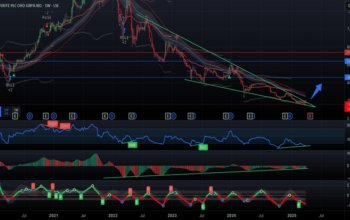The world of trading is an ever-evolving landscape where traders seek opportunities to capitalise on market movements and generate profits. Among the various financial instruments available, the listed options offer an intriguing avenue for intermediate traders to explore. These derivatives provide the option, but not the constraint, to purchase or resell an underlying asset at a predetermined price within a specific timeframe.
This article aims to guide intermediate traders on their journey with listed options. It provides insights into essential concepts and strategies that can contribute to their success in this complex and dynamic market.
Understanding listed options
Listed options are financial contracts traded on organised exchanges, granting the holder the option to buy (call option) or sell (put option) an underlying asset, such as stocks, commodities, or currencies, at a predetermined strike price. Traders can use options to speculate on the direction of an asset’s price movement or to hedge against potential risks in their investment portfolios.
One of the critical elements of listed options is their expiration date. Options have a limited lifespan; once they expire, they become worthless. This feature makes options time-sensitive, and traders Swissmoney must carefully consider the time decay effect, known as theta when building their strategies.
While listed options offer potential benefits such as leverage and risk management, they are complex instruments that require a thorough understanding. Intermediate traders should devote time to learning the terminology, mechanics, and pricing models associated with options to make informed and calculated decisions.
The greeks: Measuring option sensitivity
To navigate the world of listed options effectively, intermediate traders must grasp the concept of the Greeks.
Delta is one of the essential Greeks, representing an option’s price change concerning a $1 change in the underlying asset’s price. A call option typically has a delta ranging from 0 to 1, while a put option ranges from 0 to -1. For example, a call option with a delta of 0.6 will increase by $0.60 if the underlying asset’s price rises by $1.
Another crucial Greek is gamma, which measures the rate of change in an option’s delta concerning a $1 change in the underlying asset’s price. Gamma helps traders understand how delta may change as the underlying asset’s price fluctuates. Traders employing delta hedging strategies must be mindful of gamma’s impact.
Vega quantifies an option’s price sensitivity to changes in implied volatility. Implied volatility is a crucial factor in options pricing, as it reflects market expectations of the underlying asset’s future price fluctuations. Traders can use vega to assess the potential effects of changing volatility levels on their options positions.
Theta, as mentioned earlier, is the time decay factor. It measures the reduction in an option’s price due to the passage of time, assuming all other variables remain constant. Traders should be aware that as options approach their expiration date, the rate of time decay accelerates.
Rho represents an option’s sensitivity to changes in interest rates. However, in today’s low-interest-rate environment, the impact of rho is generally considered less significant compared to other Greeks.
Basic options trading strategies
Intermediate traders exploring trading options can implement various trading strategies to achieve their financial objectives. Here are some fundamental options strategies:
Long call strategy: This strategy involves purchasing call options, allowing traders to profit from a rising underlying asset’s price. Long calls offer limited risk, as the maximum loss is limited to the premium paid for the options. However, traders should be mindful of time decay, as the value of long calls may decrease as the expiration date approaches.
Long put strategy: The long put strategy involves buying put options, allowing traders to profit from a declining underlying asset’s price. Like long calls, long puts also have limited risk, and the maximum loss is capped at the premium paid for the options.
Covered call strategy: In this strategy, traders who own the underlying asset resell call options against their holdings. By doing so, they receive premium income, which can provide a cushion against potential losses if the underlying asset’s price decreases. However, if the underlying asset’s price rises significantly, traders may have to sell their holdings at the strike price, missing out on additional profits.
Straddle strategy: A straddle involves purchasing both a call option and a put option with the same strike price and expiration date. Traders use this strategy when they expect significant price movements in the underlying asset but are unsure regarding the direction. Straddles can be profitable if the price moves substantially in either direction.
All in all
As intermediate traders venture into the world of listed options, they open themselves to a versatile and dynamic market that offers various opportunities and risks. Understanding the fundamentals of options, including the Greeks and basic trading strategies, is essential to making well-informed decisions and managing risk effectively.
Success with the listed options requires continuous learning, practice, and discipline. Intermediate traders should always appreciate the importance of thorough research and stay up-to-date with market developments.



